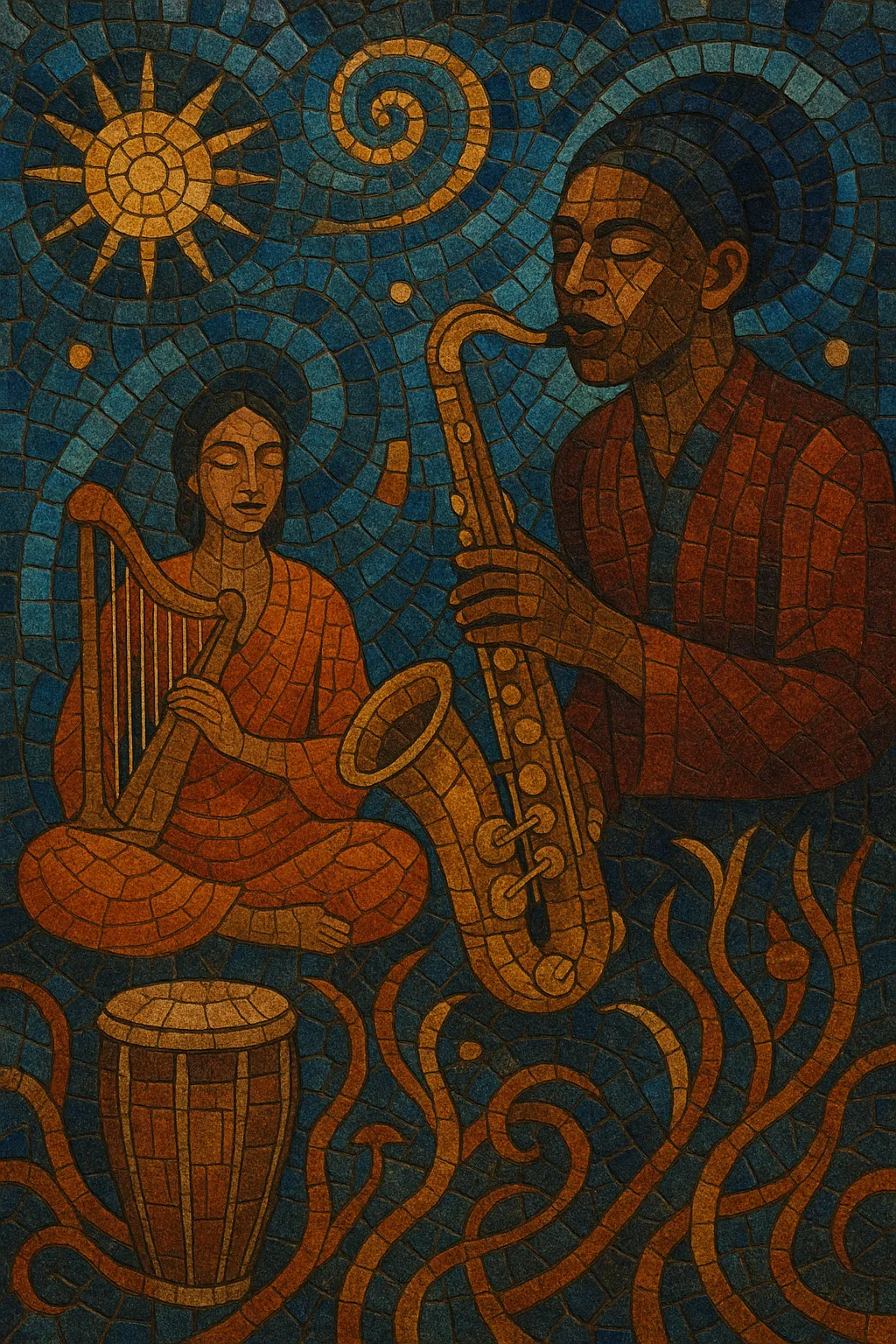
Spiritual jazz is a strand of modern jazz that seeks transcendence through sound, blending free improvisation, modal frameworks, and non‑Western musical concepts to evoke the sacred, the cosmic, and the ecstatic.
It often features long, open forms; drones and pedal points; polyrhythmic percussion; and timbres associated with ritual or meditation (harp, flutes, bells, tanpura). Melodic language leans toward modes and scales from African, Middle Eastern, and South Asian traditions alongside blues inflection. The mood can shift from contemplative prayer to cathartic release, and vocal elements may include chants, mantras, spoken word, or invocations aligned with spiritual or philosophical themes.
Spiritual jazz coalesced in the 1960s United States as jazz musicians increasingly framed improvisation as a vehicle for transcendence and social liberation. John Coltrane’s late period (e.g., A Love Supreme) articulated an explicitly devotional approach within modal and increasingly free settings. In parallel, Sun Ra forged an Afrofuturist cosmology that married big‑band language to cosmic ritual, while Yusef Lateef, Don Cherry, and others integrated scales, instruments, and concepts from Africa, the Middle East, and South Asia. The civil rights era, Black Arts Movement, and growing interest in Eastern philosophies created fertile ground for this spiritual turn.
Pharoah Sanders, Alice Coltrane, Archie Shepp, Albert Ayler, and Lonnie Liston Smith broadened the palette with drones, extended vamps, ecstatic tenor cries, harp and organ textures, and trance‑like polyrhythms. Independent and artist‑run labels and collectives helped document the scene, emphasizing autonomy and community. The music balanced meditative serenity with cathartic intensity, often employing chant‑like vocals, poetry, and ritualistic percussion.
While jazz fusion and neoclassical trends diverted mainstream attention, spiritual jazz persisted in pockets—intersecting with world fusion, ambient/new age textures, and community‑based ensembles. Reissue programs and crate‑digging culture in the 1990s–2000s rediscovered rare LPs, and hip hop producers sampled its modal vamps and astral atmospheres, renewing interest among new audiences.
A global resurgence reframed spiritual jazz for the 21st century, with artists in the U.S., U.K., and beyond drawing on its ecstatic roots while adding modern rhythm‑section sensibilities and broader diasporic references. Figures associated with the new London jazz movement and U.S. large‑ensemble works reasserted the style’s communal, devotional ethos, confirming spiritual jazz as an enduring conduit for reflection, resistance, and collective uplift.

